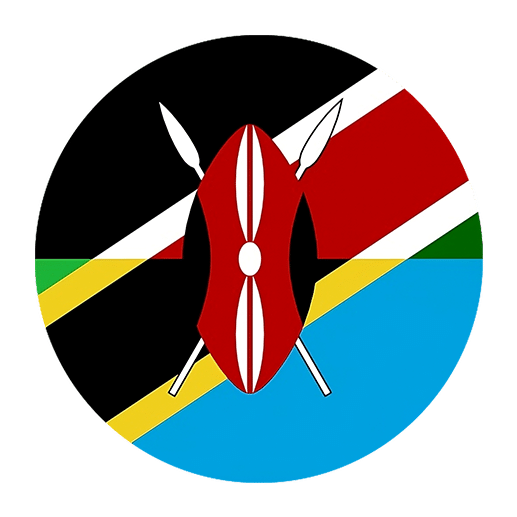The Swahili language, known as Kiswahili in its native form, is a Bantu language widely spoken in East Africa. It serves as both a first and second language for millions of people, particularly in countries such as Kenya, Tanzania, Uganda, Mozambique, and the Democratic Republic of Congo. Swahili has a rich history that intertwines with the socio-political dynamics of the region, and its development has been significantly influenced by various waves of colonialism over the centuries. Understanding the impact of colonialism on the Swahili language provides valuable insights into how external forces can shape and transform indigenous languages.
Pre-Colonial Influences
Before delving into the colonial impacts, it is essential to acknowledge that Swahili had already been influenced by various cultures and languages even before European colonialism. Arab traders from the Arabian Peninsula had a notable presence along the East African coast from as early as the 7th century. Their influence introduced a significant number of Arabic words into Swahili, particularly in areas related to trade, religion, and daily life. The Swahili coast became a vibrant melting pot of African, Arab, Persian, and Indian cultures, creating a unique linguistic and cultural tapestry.
Trade and Religion
The Arab traders who settled along the Swahili coast were primarily involved in trade and commerce, which necessitated communication and cultural exchange. Swahili absorbed numerous Arabic words related to trade, navigation, and other aspects of daily life. For instance, the Swahili word for book, “kitabu,” comes from the Arabic “kitāb,” and the word for school, “skuli,” is derived from the Arabic “sukul.”
Additionally, the spread of Islam by these Arab traders had a profound effect on Swahili society and language. Religious terms, names, and practices from Arabic were incorporated into Swahili. This early influence laid the groundwork for the language’s adaptability and openness to external linguistic elements.
European Colonialism and Its Linguistic Impact
The arrival of European powers in East Africa during the late 19th and early 20th centuries marked a new chapter in the history of Swahili. The region saw colonization by the Portuguese, Germans, and British, each of whom left their mark on the language in different ways.
Portuguese Influence
The Portuguese were among the first Europeans to establish a presence along the East African coast. Their influence on Swahili was relatively limited compared to later colonial powers, but it was still significant. The Portuguese introduced new words, particularly in the realms of food, navigation, and governance. For example, the Swahili word for table, “meza,” is derived from the Portuguese “mesa,” and “gereza” (prison) comes from the Portuguese “igreja.”
German Influence
Germany colonized parts of East Africa, including modern-day Tanzania, Rwanda, and Burundi, from the late 19th century until the end of World War I. During their colonial rule, the Germans made efforts to learn and document the Swahili language, producing dictionaries and grammars. This documentation helped standardize Swahili, facilitating its use as a lingua franca in the region. The Germans also introduced some German words into Swahili, although their overall linguistic impact was less pronounced than that of the British.
British Influence
The British colonization of East Africa had the most substantial impact on the Swahili language. British rule extended over Kenya, Uganda, and parts of Tanzania, and English became the language of administration, education, and higher social status. This led to a significant influx of English vocabulary into Swahili, particularly in domains such as government, education, technology, and modern life.
Education and Language Policy
The British established a formal education system in their East African colonies, which prioritized English as the medium of instruction. This policy had a profound effect on Swahili, as it became essential for Swahili speakers to learn English to access higher education and better job opportunities. Consequently, many Swahili speakers became bilingual, incorporating English words and phrases into their daily speech. This phenomenon, known as code-switching, became common in urban areas.
Media and Communication
The spread of English-language media, including newspapers, radio, and later television, further entrenched English in East African societies. Swahili newspapers and radio programs emerged, but they often included a mix of Swahili and English, reflecting the linguistic reality of the time. This blending of languages contributed to the evolution of a unique Swahili variant that incorporated numerous English loanwords.
Standardization and Modernization
The British colonial administration played a role in standardizing Swahili by promoting a standardized form of the language for administrative and educational purposes. This standardization aimed to create a uniform written and spoken form of Swahili that could be used across different regions and ethnic groups. The standardized form, known as “Standard Swahili” or “Kiswahili Sanifu,” became the basis for teaching and official communication.
Post-Colonial Developments
The post-colonial period brought significant changes to East Africa, including efforts to reclaim and promote indigenous languages and cultures. Swahili emerged as a symbol of national identity and unity in several newly independent countries.
Tanzania
Tanzania, under the leadership of President Julius Nyerere, adopted Swahili as the national and official language. Nyerere’s policy of “Ujamaa” (African socialism) emphasized the importance of Swahili as a unifying force in a country with numerous ethnic groups and languages. Swahili was promoted as the language of education, administration, and national culture. This policy helped elevate the status of Swahili and ensured its continued development as a modern language.
Kenya
In Kenya, Swahili also gained prominence as a national language, alongside English. While English remained the primary language of instruction and official communication, Swahili was promoted as a language of national identity and cultural pride. Efforts were made to develop Swahili literature, media, and educational materials.
Regional and International Influence
Swahili’s influence extended beyond national borders, becoming a lingua franca for East Africa and a symbol of regional unity. The East African Community (EAC), an intergovernmental organization comprising Kenya, Tanzania, Uganda, Rwanda, Burundi, and South Sudan, adopted Swahili as one of its official languages. Swahili also gained recognition as a working language of the African Union (AU).
Global Reach
Swahili’s global reach expanded further through migration, trade, and cultural exchange. Swahili-speaking communities can be found in various parts of the world, including North America, Europe, and the Middle East. The language’s inclusion in international organizations and its use in global media, such as Swahili-language news services and films, contributed to its growing international presence.
Contemporary Challenges and Opportunities
While Swahili has made significant strides in terms of recognition and development, it faces contemporary challenges and opportunities in a rapidly changing world.
Technological Advancements
The digital age presents both challenges and opportunities for Swahili. The proliferation of digital communication platforms, social media, and online content has led to the creation of new linguistic forms and expressions. Swahili speakers are adapting the language to fit the digital landscape, incorporating internet slang and abbreviations. However, there is also a risk of linguistic fragmentation as different online communities develop their own variations of Swahili.
Education and Language Preservation
Efforts to promote Swahili in education continue, but challenges remain. In some regions, the dominance of English in higher education and professional fields can overshadow Swahili. Ensuring that Swahili remains a viable and respected language of instruction and scholarship requires ongoing investment in educational resources, teacher training, and curriculum development.
Language Standardization
Maintaining a standardized form of Swahili that accommodates regional variations while preserving linguistic unity is an ongoing challenge. Efforts by linguistic institutions, governments, and cultural organizations to document and standardize Swahili are crucial for its continued development and preservation.
Conclusion
The impact of colonialism on the Swahili language is a multifaceted and complex story of cultural exchange, adaptation, and resilience. From the early influences of Arab traders to the profound changes brought by European colonial powers, Swahili has evolved into a dynamic and adaptable language that reflects the rich history of East Africa. In the post-colonial era, Swahili has emerged as a symbol of national and regional identity, with a growing global presence.
As Swahili continues to navigate the challenges and opportunities of the modern world, it remains a testament to the enduring power of language as a vehicle for cultural expression, communication, and unity. Understanding the historical and contemporary dynamics of Swahili provides valuable insights into the broader impact of colonialism on indigenous languages and the ongoing efforts to preserve and promote linguistic diversity.

